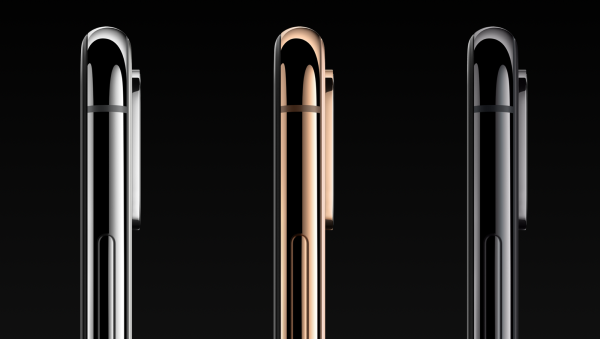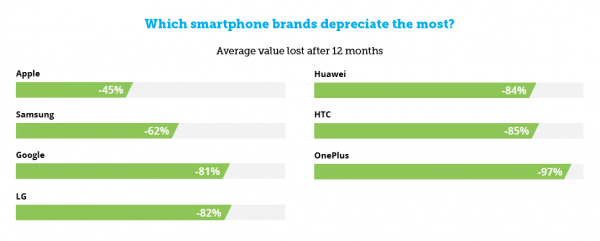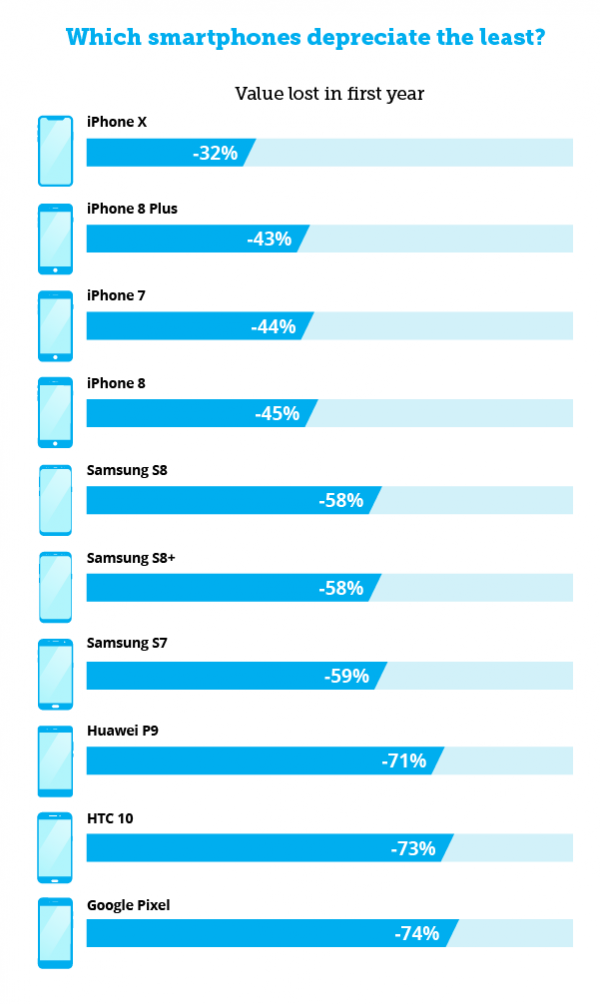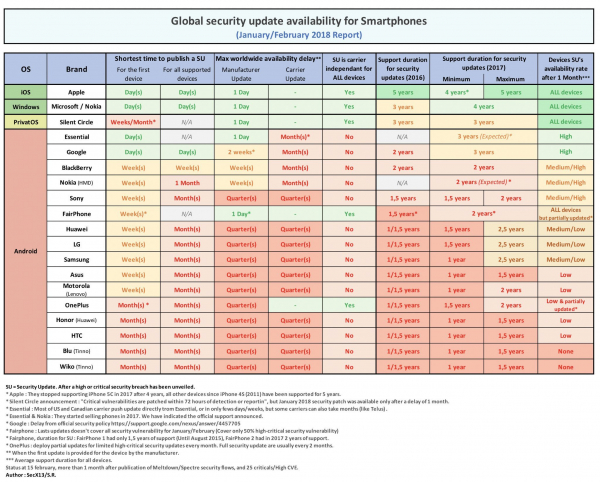It blows my mind how many people preach this conspiracy theory. Marques Brownlee, the one tech reviewer who loves tech without being a fanboy in either direction, explains it best.
When We Shifted from "Smartphones" to Actual Smartphones →
Nokia and Blackberry were skating to where the puck was going to be, and felt nice and fast and in control, while Apple and Google were melting the ice rink and switching the game to water-skiing.
At the time, Nokia and Blackberry seemed to be leading the way to the future. There weren't wrong…but iPhone and Android completely changed the game.
The Foldable Huawei Mate X →
Okay, the Samsung Galaxy Fold made me feel like foldable phones were 5-6 years away from going mainstream (because of price and hardware bulkiness).
But now this foldable Huawei Mate X makes me feel like it's 4-5 years away.
Still bullish on AR glasses, but foldables will go mainstream much sooner.

iPhone Forever →
MG Siegler on The $1,500 iPhone, the next (last?) stop on the march towards 'Apple Prime':
It just makes sense. I do believe this year may be an aforementioned test of Apple’s customers willingness to pay insanely high prices for a phone. I can’t see the trend continuing with the $2,000 iPhone. But actually, I can! It will just be obfuscated by monthly payments. Just as it used to be in the days of carrier subsidies! But this time, such payments will be going directly to Apple.
Again, this is already happening for those of us on the iPhone Upgrade Program. And it means there is no $1,500 iPhone, it’s more like a $60/month iPhone. And you can easily talk yourself into it because thanks to being eligible for a yearly upgrade to the latest iPhone, you’re never paying full price for a device. Instead, if you do the math (which most won’t), you’re paying roughly half the cost for the top-of-the-line model over that year.
Of course, you’re also paying Apple in perpetuity! And this monthly bill is only going to go up as they bake in AppleCare (which they do), theft protection (new this year!), and eventually all sorts of other goodies: iCloud storage, Apple Music, Apple Television (the service, not the box), etc.
This is how Apple truly becomes a services business. And it’s happening in front of our very eyes.
This is exactly what makes Amazon Prime so successful — start with a killer service, charge a monthly fee, constantly add new value and perks to make it impossible for subscribers to leave, and slowly raise the price.
I can absolutely see Apple working towards this.
I’m not sure when Apple realized and started executing upon this gradual price increase strategy. My best guess is just after 2011, when the top-of-the-line price started inching upwards again. Perhaps (almost certainly?) not coincidentally, this was the same year they let carriers subsidize old models down to $0. Apple let the lowest iPhone hit the bottom in order to set the top-of-the-line on a trajectory towards the stratosphere.
And it worked, rather beautifully. Now, I believe, the $1,500 iPhone offers a glimpse into Apple’s next phase. The $99/month, forever, iPhone.
iPhone forever.


Smartphone Depreciation →
Like most technology, smartphones lose their value over time. As new models are released with improved features and capabilities, people start to lose interest in older models, and with this decreased demand comes a dip in value.
However, this depreciation doesn’t always happen at a steady rate – certain things can cause sudden drops. Knowing the best time to sell your phone can help make sure you get the most money possible.
Study: Google's Data Collection on Stationary Android Phones →
Douglas C. Schmidt, Professor of Computer Science at Vanderbilt University, cataloged how much data Google is collecting about consumers and their most personal habits across all of its products and how that data is being tied together.
Here is what he found:
- A dormant, stationary Android phone (with the Chrome browser active in the background) communicated location information to Google 340 times during a 24-hour period, or at an average of 14 data communications per hour. In fact, location information constituted 35 percent of all the data samples sent to Google.
- For comparison’s sake, a similar experiment found that on an iOS device with Safari but not Chrome, Google could not collect any appreciable data unless a user was interacting with the device. Moreover, an idle Android phone running the Chrome browser sends back to Google nearly fifty times as many data requests per hour as an idle iOS phone running Safari.
- An idle Android device communicates with Google nearly 10 times more frequently as an Apple device communicates with Apple servers. These results highlighted the fact that Android and Chrome platforms are critical vehicles for Google’s data collection. Again, these experiments were done on stationary phones with no user interactions. If you actually use your phone the information collection increases with Google.
- Google has the ability to associate anonymous data collected through passive means with the personal information of the user. Google makes this association largely through advertising technologies, many of which Google controls. Advertising identifiers—which are purportedly “user anonymous” and collect activity data on apps and third-party webpage visits—can get associated with a user’s real Google identity through passing of device-level identification information to Google servers by an Android device.
- Likewise, the DoubleClick cookie ID—which tracks a user’s activity on the third-party webpages—is another purportedly “user anonymous” identifier that Google can associate to a user’s Google account. It works when a user accesses a Google application in the same browser in which a third-party webpage was accessed previously.

Study: iOS Security Updates are Best in Industry →
SecurityLab shared their analysis of smartphone manufacturers' security updates, focusing on four specific questions:
- The shortest time to publish a security update following discovery of a vulnerability
- The maximum delay in making the update available to all
- Whether or not updates were independent of carriers
- How long a device is supported with security updates
The top-rated brand was Apple, scoring green in all categories. Of Android brands, just two scored reasonably highly.
Apple's had an embarrassing rough patch of bad software bugs in the past few months, but they're the fastest in the industry at patching it up.
Apple Slowing Down Old iPhones →
Brian X. Chen of NYT:
What Apple is acknowledging is a power management technique in which the iPhone scales back processing power to keep the device running for longer when its battery health is low. Lithium ion batteries have a limited number of charge “cycles” before they can no longer be recharged properly. Apple’s website says the battery loses about 20 percent of its original capacity after 500 charge cycles.
In other words, if your iPhone is beginning to run out of battery capacity, these slowdowns might kick in to keep it running for longer or prevent it from shutting down unexpectedly.
This isn't a ploy to get old iPhone customers to upgrade. On the contrary, this is an engineering decision made to keep your old iPhones running longer.
Engineering-wise, I think Apple made the right decision. But user experience-wise, I definitely think Apple needs to better communicate these limitations of lithium ion technology, especially when an iPhone customer's battery has degraded past a certain threshold.
Every iPhone customer should know the cheapest solution is to replace the battery through Apple for $79.

Two Weeks with iPhone X
Whenever a new technology or big redesign comes along, reactions tend to split between two types of people:
- Those who like things just the way they are.
- Those who embrace change.
Those in the first group, Apple introduced the iPhone 8. It's for those who like the familiarity and comfort of the same hardware design since 2014. It's for those who want the same iPhone, but better.
The iPhone X is for iPhone customers in the second group. Those who are happy in the Apple ecosystem but are eager for something new.
After using the iPhone X for two weeks, I'd like to share some of my experiences for those who are considering it and highlight some details you probably missed.